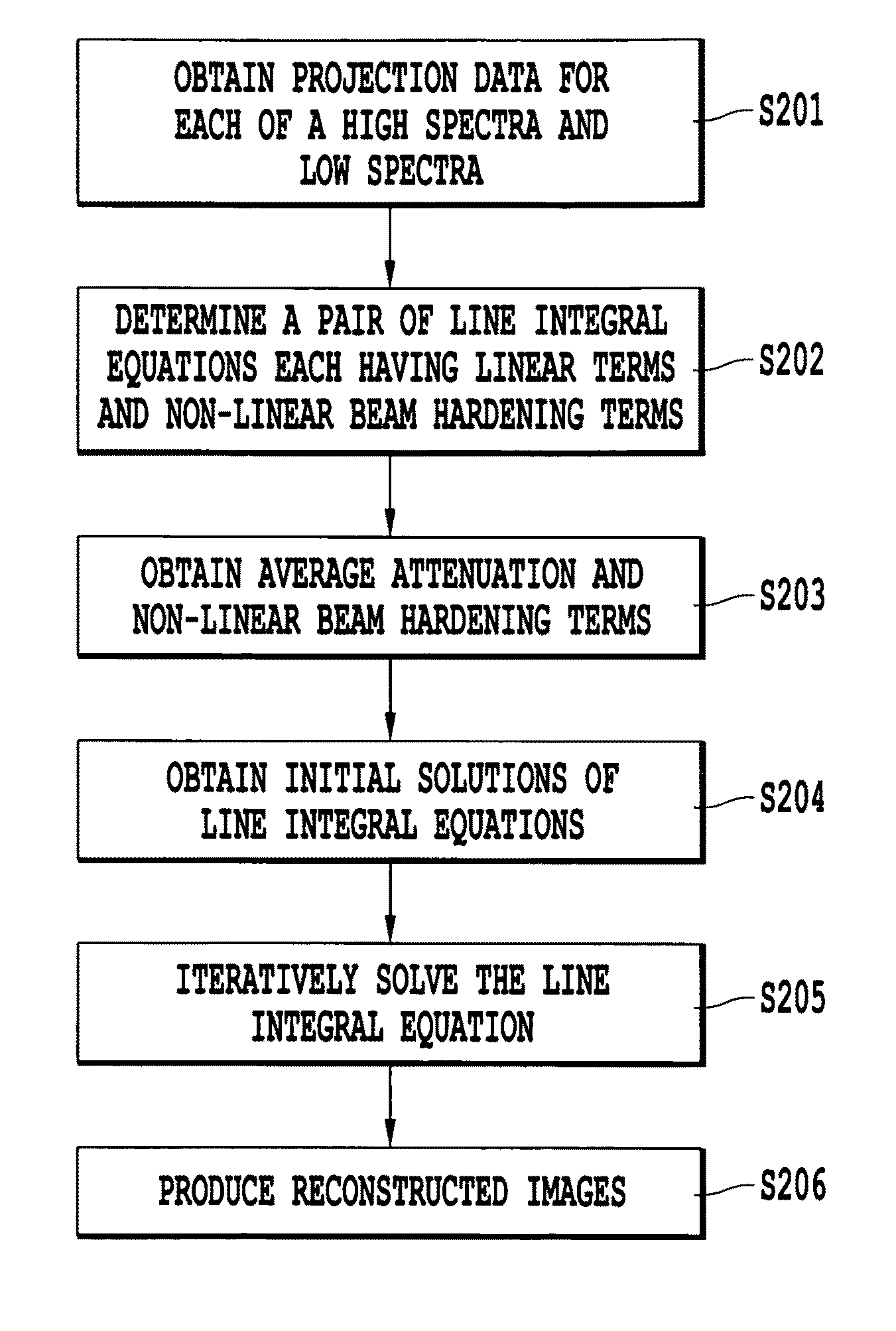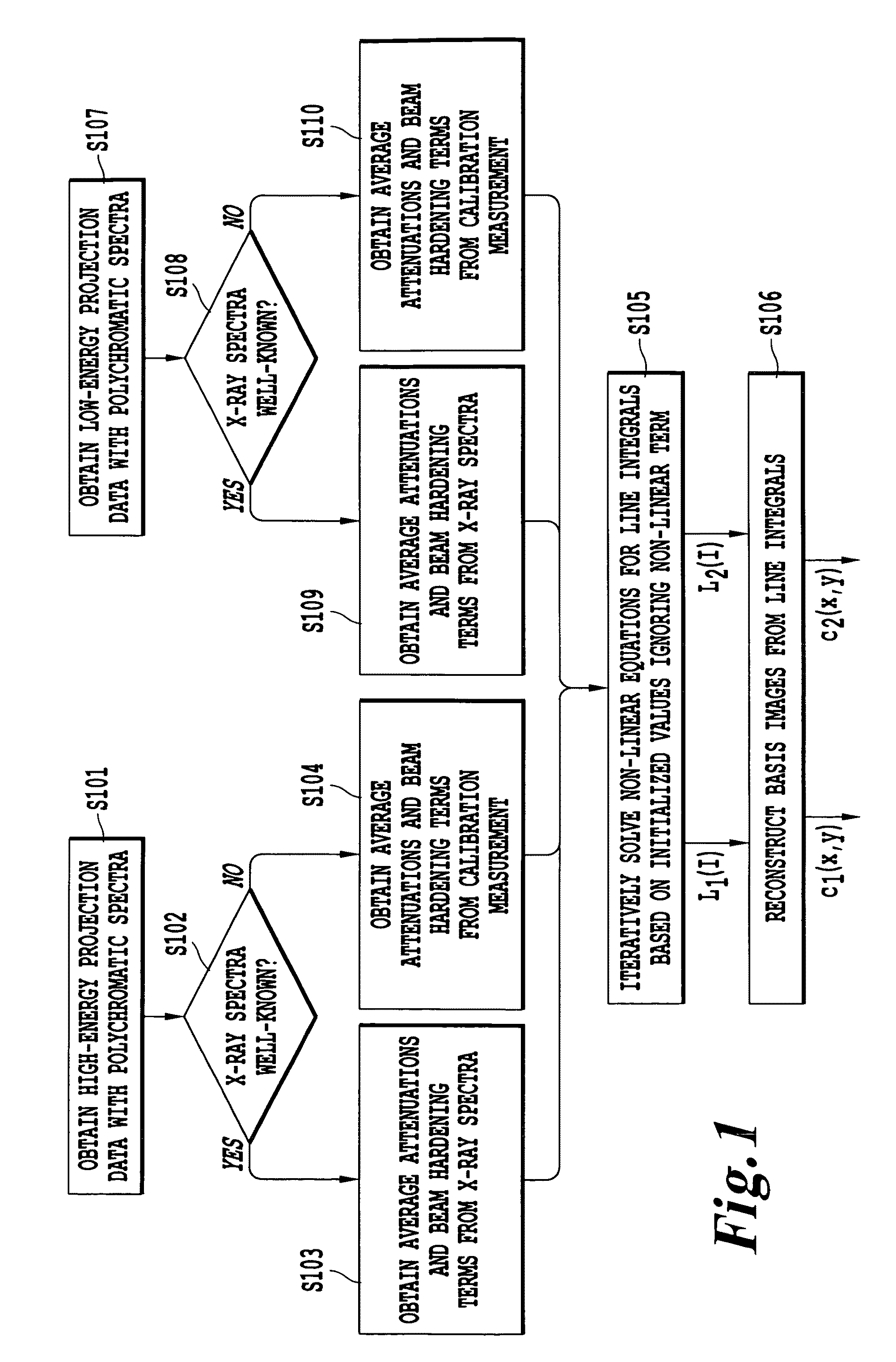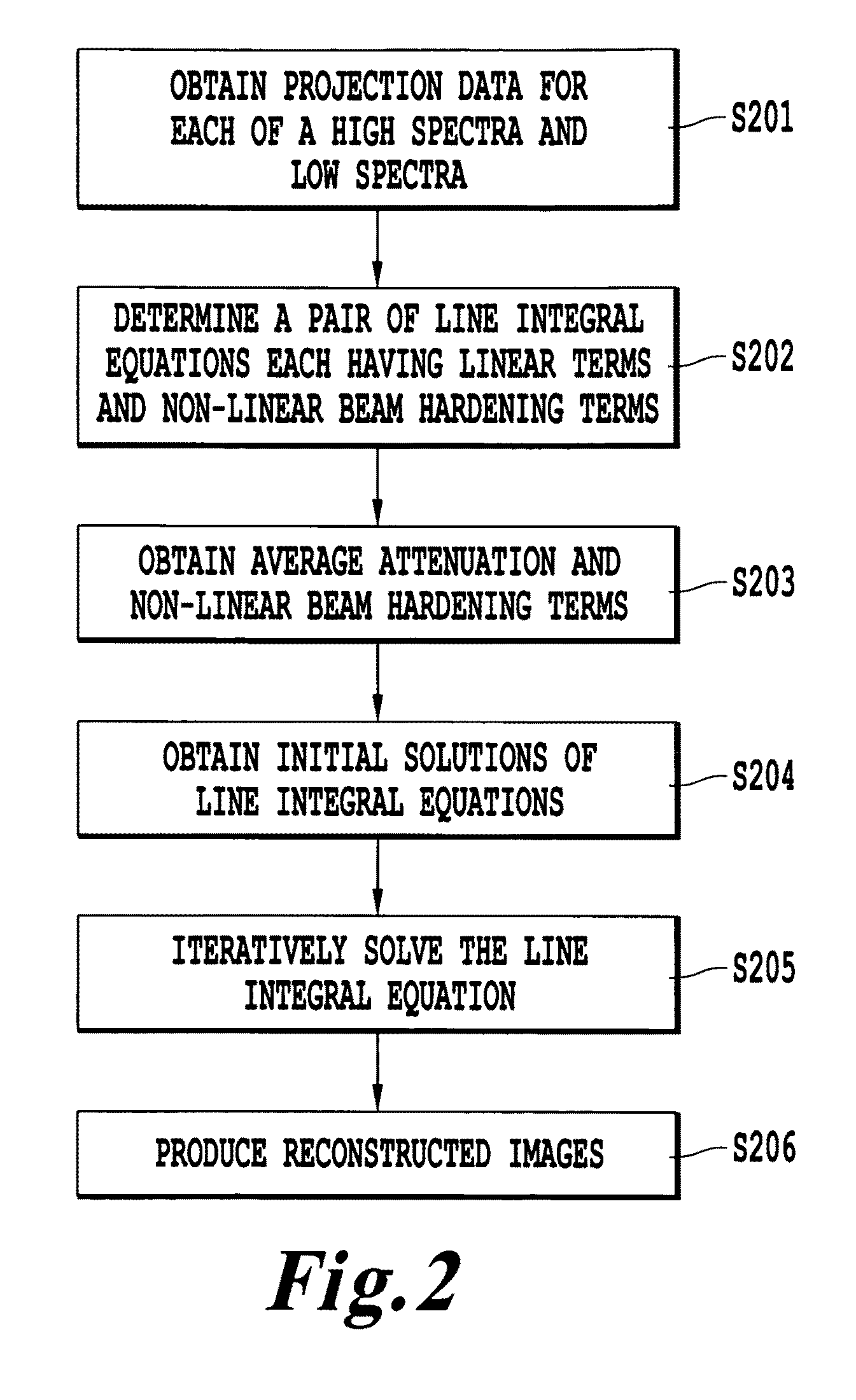Method, apparatus, and computer-readable medium for pre-reconstruction decomposition and calibration in dual energy computed tomography
a dual-energy computed tomography and pre-reconstruction technology, applied in tomography, instruments, applications, etc., can solve the problems of nonlinear and not exactly solvable, strong artifacts in the reconstructed image, and beam hardening artifacts
- Summary
- Abstract
- Description
- Claims
- Application Information
AI Technical Summary
Benefits of technology
Problems solved by technology
Method used
Image
Examples
Embodiment Construction
[0043]Conventional methods of dual-energy CT image reconstruction may perform slowly and be difficult or expensive to implement. For example, the polynomial fitting method may introduce some errors and the inversion method has some computational drawbacks, the variation method is computationally time consuming, and the sub-region and iso-transmission methods are more sensitive to noise. Further, implementations of those methods may be complex.
[0044]The present invention includes 1) a new pre-reconstruction decomposition method and 2) an approach to obtain parameters through a calibration in cases where the spectra are not well known. A numerical simulation study demonstrates that the methods are accurate, stable, and efficient. No significant noise amplification was observed in an experimental monochromatic image at proper energies.
[0045]According to an embodiment of the present invention, a pre-reconstruction decomposition method includes rewriting the non-linear equations as linea...
PUM
 Login to View More
Login to View More Abstract
Description
Claims
Application Information
 Login to View More
Login to View More - R&D
- Intellectual Property
- Life Sciences
- Materials
- Tech Scout
- Unparalleled Data Quality
- Higher Quality Content
- 60% Fewer Hallucinations
Browse by: Latest US Patents, China's latest patents, Technical Efficacy Thesaurus, Application Domain, Technology Topic, Popular Technical Reports.
© 2025 PatSnap. All rights reserved.Legal|Privacy policy|Modern Slavery Act Transparency Statement|Sitemap|About US| Contact US: help@patsnap.com



